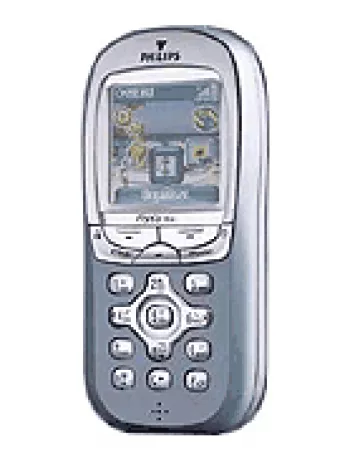
Overview
The Philips Fisio 120 is a mobile phone model that was announced in 2002, yet it has been discontinued since then. Despite the advancements in mobile technology, the Philips Fisio 120 remains an interesting piece of early 2000s technology, primarily known for its simplistic design and basic functionalities. It was a part of the feature phone era, which predates the smartphones that dominate the market today.
Network and Connectivity
The Philips Fisio 120 supports GSM network technology, specifically within the 900 and 1800 MHz frequency bands. This was fairly standard for phones at the time, providing basic voice communication capabilities. The phone did not support GPRS or EDGE, meaning it lacked data connectivity options, which are considered essential in modern devices. Consequently, the Philips Fisio 120 was primarily used for making calls and sending text messages (SMS).
Launch and Availability
Philips announced the Fisio 120 model in 2002, and it gained some popularity at the time due to its affordability and functionality. However, like many early mobile phones, it has long been discontinued. Despite this, the device holds a nostalgic value for those who used it during its peak years or have a keen interest in the evolution of mobile phone technologies.
Design and Build
The Philips Fisio 120 features a compact and straightforward design, measuring 106 x 49 x 22 mm and weighing 95 grams. This makes it lightweight and easy to carry. The phone uses a Mini-SIM card, another reflection of the older design standards. It's quite different from today's smartphones, which come with sleek designs and advanced materials. The Fisio 120's body was available in three colors: Storm Black, Whale Blue, and Opal White.
Display
The display of the Philips Fisio 120 is a monochrome graphic type, capable of showing text over four lines. While this seems very limited compared to today's elaborate color displays with touch capabilities, it served the needs of the time primarily for reading messages and navigating through simple menus.
Memory and Storage
The phone does not include a memory card slot, which limits its storage capacity to what is necessary for contacts and basic call information. The phonebook could only store contacts on the SIM card, with record-keeping for 10 dialed, 10 received, and 10 missed calls. This limited storage reflects the phone’s intended use for essential communication without additional media or complex applications.
Camera
The Philips Fisio 120 does not possess a camera, a common attribute with many of its contemporaries at the time. Mobile phone cameras were just emerging during the early 2000s, and they were not viewed as essential features until much later in mobile phone evolution.
Sound and Alerts
In terms of sound, the Fisio 120 does not have a loudspeaker and does not support a 3.5mm jack for headphones. However, it supports vibration alerts and downloadable monophonic ringtones, which were a popular feature during its time. Users enjoyed customizing ringtones, giving each phone a bit of personal flair.
Communications and Features
The Philips Fisio 120 lacks modern communication features such as WLAN, Bluetooth, GPS, and a radio. It also does not support a browser or Java applications, which limits its functionality to the most basic phone operations. The device does support SMS messaging, and includes a clock and an alarm, but unfortunately lacks any pre-installed games.
Battery Life
The Philips Fisio 120 is powered by a removable NiMh 750 mAh battery, which offers up to 350 hours of standby time and about 4 hours of talk time. These battery specifications were reasonable for its time, allowing users to remain disconnected from power sources for extended periods, something that more power-hungry modern smartphones often struggle with.
Conclusion
The Philips Fisio 120 is a historical piece in the evolution of mobile devices. Though it doesn't have the capabilities of a modern smartphone, it fulfilled the basic communication needs of its users two decades ago. Its design and features reflect a time when mobile phones were transitioning from being rare, luxury items to becoming essential tools for everyday personal and professional communication. Today, the Fisio 120 may seem outdated, but it serves as a reminder of how much the technology has evolved in a relatively short timeframe.
Key Features of Philips Fisio 120
- Compact Design: Dimensions of 106 x 49 x 22 mm and lightweight at 95 g.
- GSM Technology: Supports GSM 900/1800 2G bands.
- Monochrome Graphic Display: Features a display with 4-line resolution.
- Simple Phonebook: SIM-only phonebook availability.
- Basic Call Record Storage: Keeps records of 10 dialed, 10 received, and 10 missed calls.
- Messaging: Supports SMS messaging.
- Battery Life: Removable NiMh 750 mAh battery with up to 350 hours of standby time and 4 hours of talk time.
- Color Variants: Available in Storm Black, Whale Blue, and Opal White.
- Alert Options: Vibration and downloadable monophonic ringtones available for alert types.
- Basic Features: Includes a clock and alarm functionality.
Philips Fisio 120 Disadvantages
- No GPRS or EDGE support for mobile data connectivity.
- The display is monochrome graphic with limited resolution (only 4 lines).
- No memory card slot for storage expansion.
- Limited phonebook capacity as it relies on SIM only.
- No camera for taking photos or videos.
- Lacks a loudspeaker functionality.
- No 3.5mm jack for headphones or external audio devices.
- Does not support Bluetooth or WLAN for wireless connectivity.
- No positioning system or GPS features included.
- FM Radio receiver is not available.
- No games or Java support for additional applications.
- Utilizes a removable NiMh battery, which may have less efficiency compared to modern Li-ion batteries.
View Also
More Phones
All Rights Reserved +14266 Phones © Mobilawy 2025

























